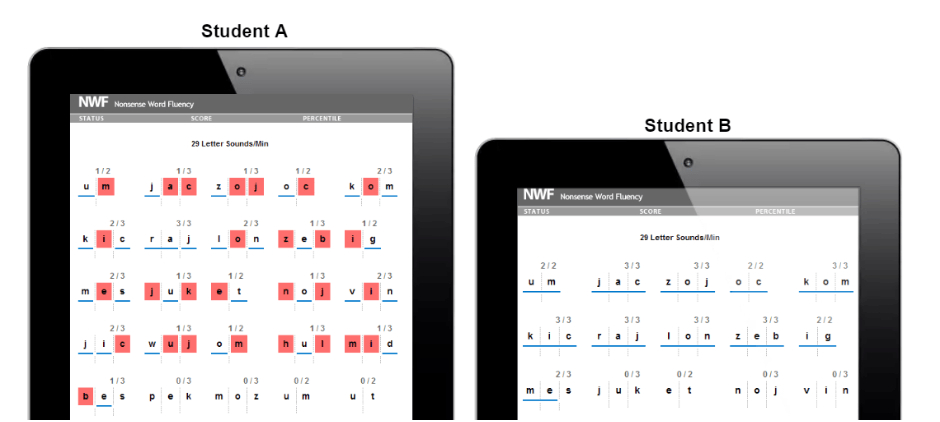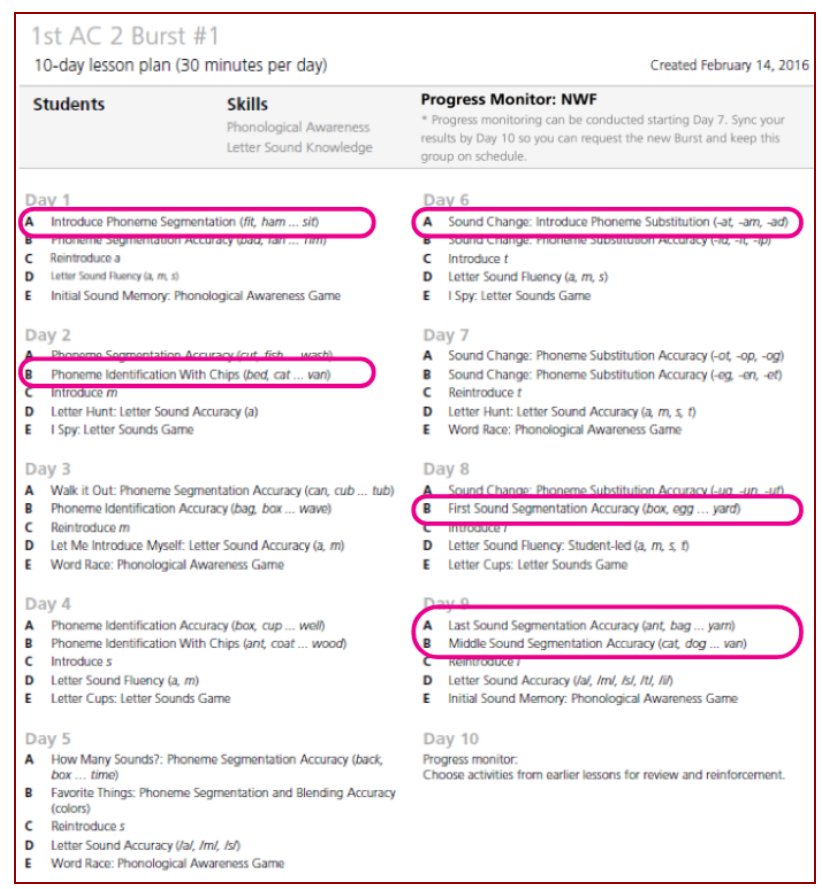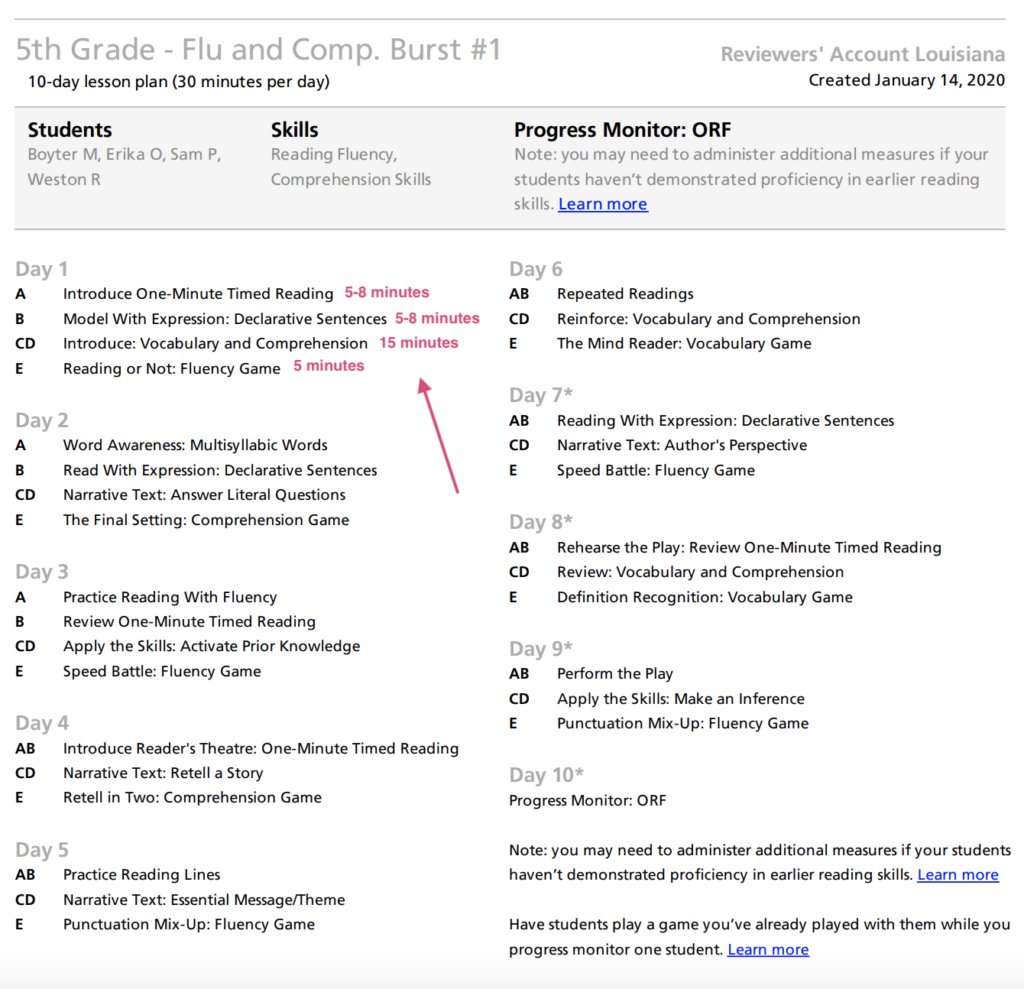mCLASS® Intervention for California
Developed in collaboration with classroom practitioners and leading researchers, including language and literacy expert Dr. Catherine Snow, mCLASS Intervention is an evidence-based intervention solution that helps struggling K–6 readers catch up to grade level.
Most importantly, it gives teachers time back in the day by doing the heavy lifting of analyzing data, grouping students, and developing and sequencing lessons—helping make effective staff-led intervention a reality.
What is mCLASS Intervention?
mCLASS Intervention is a staff-led, supplemental Tier 2/3 intervention program that seamlessly integrates with mCLASS with DIBELS® 8th Edition data and helps students develop the skills they need to access their core instruction.
Illustrated in the continuum below, each hexagon represents a skill taught in mCLASS Intervention. Skills to the left are generally precursors to skills on the right.

How does mCLASS Intervention work?
The strength of mCLASS Intervention comes from its technology-powered algorithm. Using sophisticated software algorithms, mCLASS Intervention automatically:
- Analyzes DIBELS 8th Edition and diagnostic measure results collected via the mCLASS platform.
- Determines which skills each student already knows and which they’re ready to learn next.
- Puts students into small, homogeneous groups of 4–6.
- Compiles detailed lessons that target the specific needs of each group.
In-depth analysis
Here is a brief example of how mCLASS Intervention identifies the right intervention path for each student.
The image below shows the MOY Nonsense Word Fluency (NWF) results for two first-grade students—Student A and Student B.

Both students scored 29, which is Well Below Benchmark for this time of year. In spite of these students having the same score, mCLASS Intervention’s automatic analysis of each students’ item-level responses detects that they actually have very different needs.
- For Student A, mCLASS Intervention recommends a focus on letter-sound knowledge, and sounding out and blending.
- For Student B, mCLASS Intervention recommends a focus on Regular & Irregular Word recognition. (mCLASS Intervention spirals instruction by having students work in two strands at the same time.)
Without mCLASS Intervention, this type of analysis would take educators hours to complete and, as a result, could only be completed sporadically. The automatic nature of mCLASS Intervention’s data analysis algorithm makes it possible for busy educators to complete this analysis regularly, which in turn enables them to continually target intervention instruction at students’ evolving needs, day after day.
Automatic grouping
The mCLASS Intervention algorithm not only determines the ideal instructional focus for each student, but also automatically forms small groups of 4–6 students who share the same instructional focus and builds a 10-day plan with detailed lessons that target the specific needs of each group.
Ready-to-teach 10-day plan
Each 10-day plan systematically builds skills. For example, in the 10-day plan below, mCLASS Intervention has a particular group of students work on phonological awareness and letter-sound knowledge. And within phonological awareness, mCLASS Intervention first introduces the group to phoneme segmentation; moves students through phoneme identification and substitution in subsequent days; then finishes with first, last, and middle sound segmentation.

This systematic move from less advanced to more advanced skills allows for spaced practice over time, which research has shown to have significant impact on student literacy growth.
- In a Tier 2 intensity, mCLASS Intervention lessons last 30 minutes per day and are delivered daily in groups of 4–6 students. Each session has five activities and each activity is 5–8 minutes long.
- In a Tier 3 intensity, mCLASS Intervention lessons can be 30 or 60 minutes per day and are delivered daily in groups of 3–4 students.
What makes mCLASS Intervention different?
Explicit instructional approach
All mCLASS Intervention activities begin with a Model (“I Do”) followed by a Practice (“You Do”). During the Model section, the instructor demonstrates how to do the activity. During the Practice section, the instructor has students practice. mCLASS Intervention uses subtle but impactful moves to maximize students’ independent thinking during the Practice portion of an activity. For example, mCLASS Intervention has the instructor call on a student only after posing the question to all students in the group and giving the group 3–5 seconds of “think time.” This approach helps instructors keep all students mentally engaged. When instructors take the opposite approach—calling on one student and then asking the question—students who aren’t called on tune out and inadvertently rob themselves of crucial practice opportunities they need to catch up to their peers.
Step-by-step guidance for staff
Because mCLASS Intervention activities are explicit and easy to follow, both certified educators and paraprofessionals with little or no training in early elementary reading can deliver mCLASS Intervention with impact. This detailed guidance gives schools a range of options when it comes to staffing intervention. And that added flexibility is vital—especially for moderate and high-need schools, which often struggle to provide intervention to all students in need.
Swift and interactive pace
mCLASS Intervention regularly incorporates game-based, kinesthetic, peer-to-peer approaches to further increase student engagement, and as a result, educators often report that mCLASS Intervention is their students’ favorite part of the day. This is likely due to the fact that students participating in mCLASS Intervention lessons:
- Get more focused attention in homogenous small groups.
- Get their specific literacy needs met with targeted instruction, so they are neither bored nor frustrated.
- Get 30-minute bursts of support filled with a variety of fast-paced and high-energy activities.
